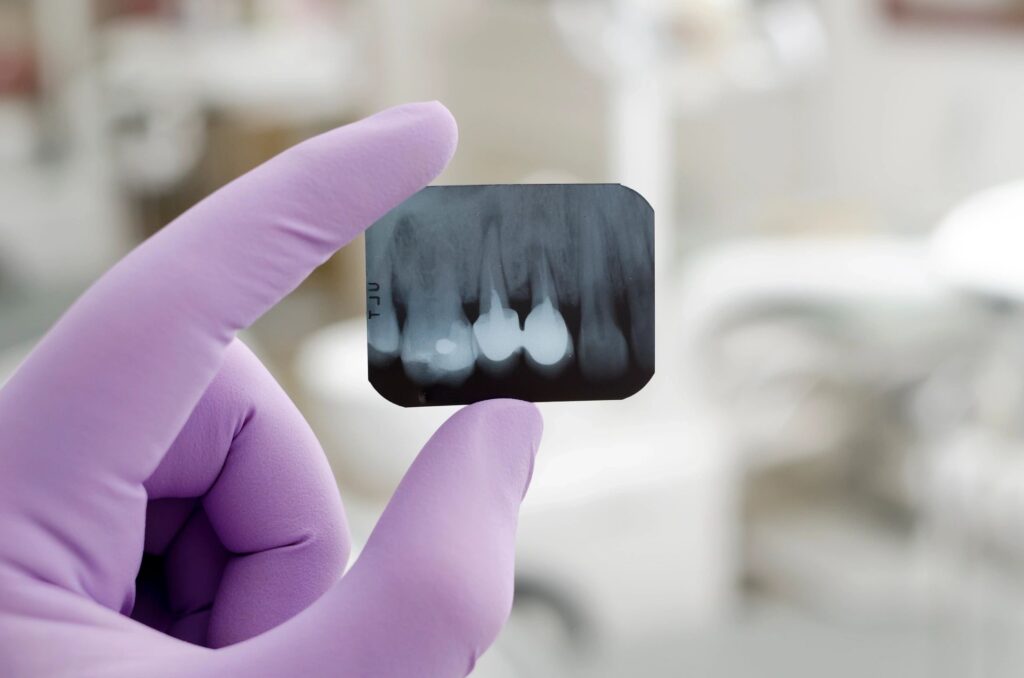Dry Socket From Wisdom Tooth Extraction

Wisdom tooth extraction can be an unpleasant experience, especially if you have to deal with a dry socket afterward. Also known as alveolar osteitis, this condition is characterized by a throbbing pain in the empty tooth socket and can make healing after the extraction process much more difficult. Fortunately, there are several things you can do to prevent or treat this painful complication of wisdom tooth extraction. It is also vital to note that only 2% – 5% of people who have their wisdom teeth removed will experience dry socket after an extraction.
What Is Dry Socket?
A socket is the area where the wisdom tooth once was and has now been removed. During the healing process, a blood clot normally forms inside this socket and helps protect the raw nerve endings underneath. However, when this clot is dislodged prematurely, it can leave the tissues underneath exposed to bacteria and other irritants, leading to pain and discomfort. This is what is referred to as dry socket. Dry socket will occur 3 – 5 days after the wisdom tooth extraction and should be attended to and treated immediately.
What Are The Symptoms Of Dry Socket?
Dry socket can be difficult to detect because it does not include the redness, swelling, and inflammation usually associated with wisdom tooth extraction. The most common symptoms of this painful complication include:
– A sharp, throbbing pain that gets worse when you try to eat or drink anything
– Visible bone where the tooth once was
– Noticeable loss of the blood clot at the extraction site
The pain experienced after a wisdom tooth extraction is often considerable and can range from mild to severe. If you experience any pain after the extraction, you must take a look inside your mouth to ensure that the socket and blood clot have not been dislodged. Dry socket can be a very painful condition and should be treated as soon as possible by a dentist to prevent further complications. Finding the right wisdom tooth extraction services in your area can ensure that you receive the best treatment possible.
How Is Dry Socket Treated?
Dry socket is a serious and painful complication that requires immediate treatment. Depending on the severity of the condition, there are several things a dentist might recommend to help ease the pain and promote healing after a wisdom tooth extraction. Your dentist might pack the socket with a medicated gel or paste and medicated dressings that will help keep the area clean and reduce pain while promoting healing. Treatment plans will depend on the pain and severity of the affected individual, so it is important to consult with a dentist if you think you may have dry socket after your wisdom tooth extraction. The dentist may also prescribe an over-the-counter pain reliever to help manage the throbbing pain associated with dry socket. And in some cases, they may also recommend an antibiotic to treat any infection in the empty tooth socket.
How Can Dry Socket Be Prevented?
After any surgery, extraction, or procedure, it is important to take steps to protect your health and prevent complications. There are a few simple things you can do yourself after wisdom tooth extraction to help prevent dry socket, including:
Eat Healthy, Nutritional Foods:
A healthy, well-balanced diet is essential for overall health and can help promote wound healing after wisdom tooth extraction. Avoiding foods that might irritate the extraction area, such as spicy or hard foods, will also help to prevent dry socket wisdom teeth complications.
Maintain Good Oral Hygiene:
Brushing your teeth regularly can help to prevent dry socket by reducing bacteria and improving healing. You may be required to skip brushing for one day and thereafter begin brushing but with a soft toothbrush to avoid irritating the extraction area. An anti-bacterial mouthwash can also be used to help keep the area clean and promote healing.
Avoid Anything That Requires Sucking:
Refraining from smoking, vaping, and using a straw can help to keep dry socket at bay by minimizing irritation to the extraction site as the suction can dislodge the blood clot. These activities should be avoided for at least a week after the extraction to avoid any complications. Smokers are 13.2% more likely to experience dry socket than non-smokers, who only have a risk of 3.8%. Tobacco and other nicotine products can have a dry-eroding effect on the blood clot, leading to dry socket.
Do Not Attend An Extraction While Sick:
If you are suffering from any type of illness or infection, it is best to wait until you have recovered before having your wisdom tooth extracted. In addition, dry socket wisdom teeth complications are more likely to develop after extraction if you are ill, as your immune system will find it more difficult to fight off the infection.
Dry socket is a serious and painful complication that can develop after wisdom tooth extraction and should be treated as soon as possible. If you find yourself needing an extraction and want the best care to help avoid dry socket wisdom teeth complications, then contact us to schedule an appointment with our team of experienced dentists today. With modern techniques and the right treatment plan, dry socket is easily preventable and can be treated quickly to help you get back to feeling your best again!
